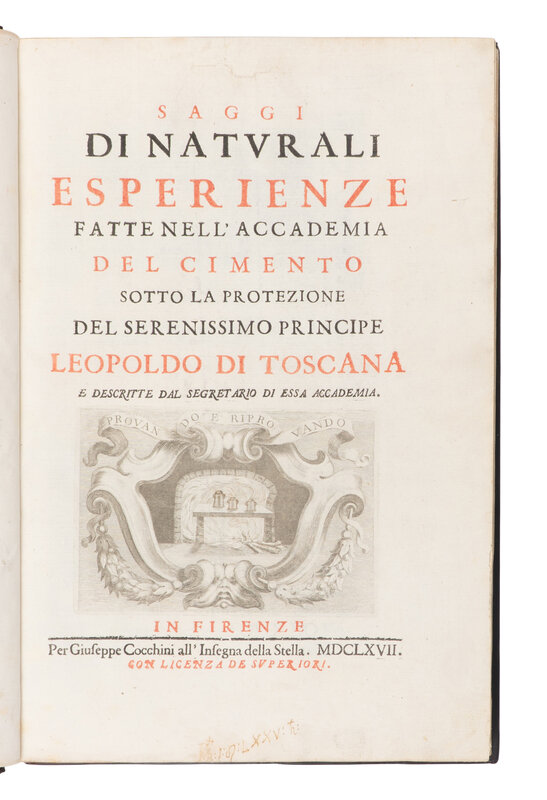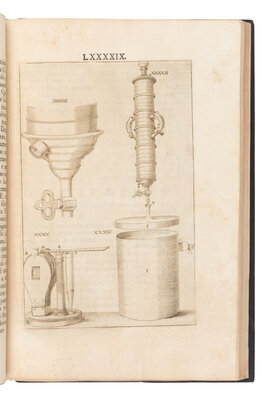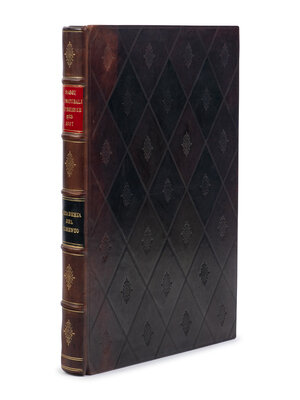Condition Report
Contact Information
Lot 205
Sale 6426 - Fine Printed Books & Manuscripts, Including Americana
Nov 13, 2025
10:00AM CT
Live / Chicago
Own a similar item?
Estimate
$800 -
1,200
Price Realized
$512
Sold prices are inclusive of Buyer’s Premium
Lot Description
[SCIENCE & TECHNOLOGY]. [MAGALOTTI, Lorenzo (1637-1712)]. -- [ACCADEMIA DEL CIMENTO]. Saggi di naturali esperienze fatte nell' Accademia del Cimento sotto la protezione del serenissimo principe Leopoldo di Toscana e descritte dal segretario di essa Accademia. Florence: Giuseppe Cocchini, 1666.
Small folio (342 x 229 mm). Half-title, engraved title page in red and black with engraved vignette and 75 full-page engravings (lacking portrait of Ferdinand II by Franciscus Spierre, some spotting throughout, offsetting, marginal dampstaining not affecting text on some pages). Modern calf antique.
FIRST ISSUE OF THE RARE 1666 FIRST EDITION OF THE ONLY PUBLICATION BY THE ACCADEMIA DEL CIMENTO.
The Accademia del Cimento was an early scientific society founded in Florence by students of Galileo, Giovanni Alfonso Borelli, and Vincenzo Viviani in 1657 and was largely funded by Prince Leopoldo and Grand Duke Ferdinando II de' Medici. Perhaps its greatest accomplishment was the publication of Saggi di naturali esperienze fatte nell' Accademia del Cimento, which sought to standardize measurements, experimental equipment, and scientific methodologies. Experimental data procured by the society were later used by Foucault to prove the rotation of the earth.
The Cimento's existence depended wholly on the rules of Leopold and Ferdinand II. Though it has been speculated that its eventual dissolution was due to a prerequisite made to Ferdinand II by Pope Alexander VII before the former being made a cardinal, it is more commonly believed that its members simply accomplished what they sought to do and moved on to other interests. That many sections of the society's publication were submitted to Alexander VII for approval before printing further speaks against this theory.
Printing of the present work began in 1664 and was completed in October 1667, though the earliest issues bear the date of 1666. Approximately 800 copies were printed and distributed as gifts to friends and colleagues. The book was translated into Latin in 1731 and by the end of the eighteenth century was the standard laboratory manual used throughout Europe. Dibner 82; Middleton 1; Norman 485; Riccardi II:407.
This lot is located in Chicago.







